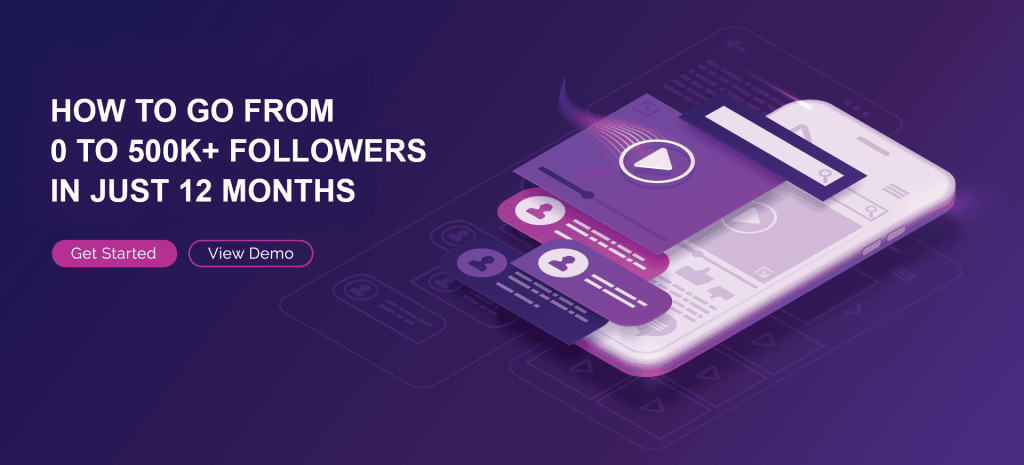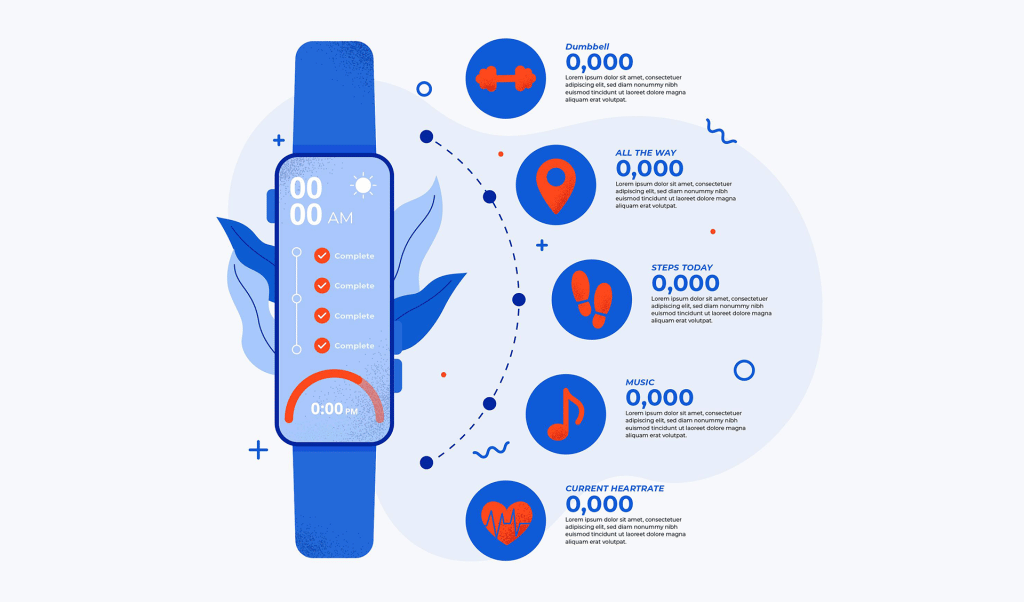Imagine a business offering weight loss programs. On one program’s sales page, you see a sentence that reads, “Stop looking like a beached whale and start losing weight today!”
If you were a potential customer, wouldn’t you immediately be turned off by this aggressive tone of voice? Not only is it rude and offensive, but it also fails to address the real concerns of those who are looking for effective weight loss programs.
No matter how good the product or service you are offering is, if your copywriting is off-putting and unprofessional, you’ll struggle to make sales. For that reason, copywriting shouldn’t be taken lightly.
In this guide, we’ll discuss the dos and don’ts of effective copywriting. As you go through them, audit your marketing collateral to make sure you’re on the right track with your copy. After all, you want your words to work for you, not against you!
What Is Copywriting?
Many business owners confuse copywriting with content writing, so they make the wrong hire for their marketing team. But the two are actually quite different, and it’s important for any business owner to understand that difference.
Copywriting is the art and science of using words to persuade readers to take a specific action, whether that be making a purchase, signing up for a mailing list, or otherwise engaging with your brand. It’s used in online marketing materials like website copy, sales pages, landing pages, product descriptions, social media ads, video sales letters (VSL), and the like.

While content writing involves creating useful, educational information for consumers to consume, copywriting is all about using language to compel them to take action and drive conversions. The difference is subtle but significant, and it’s essential to understand the nuances between these two disciplines if you want your marketing efforts to be effective.
With that said, let’s now explore the good and not-so-good aspects of effective copywriting.
5 Copywriting Do’s
If you want your copy to be persuasive and convert readers into customers, there are some key “dos” that you should keep in mind. Here are the key ones!
1. Write for Scanners
Eye tracking research has shown that people often scan copy instead of reading it word-for-word, and they don’t scan it linearly or in full. When it comes to copywriting, that translates into two actionable tips:
- Make sure that your copy is highly structured – Break up text with subheadings, bullet points, and numbered lists as much as possible. Also, use bolding and italics to draw readers’ attention to important information and key points. That way, no matter how they choose to scan your copy, they’ll be able to pick up the most important points.
- Don’t keep important information buried – It’s better to keep the most crucial information at the top rather than hiding it at the bottom of your copy. That way, if readers don’t make it all the way through your copy, you know that they still got the key information.
If your expectations are in the right place and you know that your readers are likely to scan your copy as opposed to reading it word for word, your chances of seeing great results from your marketing efforts are greatly increased.
2. Make Tangible Promises
To truly make your product or service stand out, you need to make concrete promises that resonate with your audience and set expectations for what they can expect. This may sound simple, but so many companies struggle with it!
For instance, if you offer a course that promises to help small business owners boost their social media following, you need to go a step further beyond that and quantify the results. For example, you might say that your course will help small business owners garner 1,000 more followers in 6 months – that’s a much more tangible and actionable promise than simply saying it’ll help them boost their social media following.
When you’re as precise as possible about the promises you’re making in your copy, it helps instill trust and confidence in your audience, which can significantly increase the likelihood of conversions.
3. Address Objections
One of the primary reasons that copywriting fails is that it doesn’t address readers’ objections. In fact, many people don’t even realize that their copy contains an unaddressed objection!
Objections are often rational or emotional hesitations that readers have about your product or service. They could be things like “Is this a scam?” or “Do I really need this?”. It’s essential to weed these out and address them upfront in your copy if you want to increase conversions and ensure that readers feel more confident about buying from you.
For instance, if one of the objections is “What if I pay this hefty fee and don’t see results?”, you could address that by offering a money-back guarantee or trial period. That way, if readers are still on the fence, they’ll be reassured that they can get their money back if they aren’t satisfied with your product or service.
If you can address objections upfront in your copywriting, this will reduce the chances that your readers will have lingering doubts about your offer and increase the likelihood of seeing great conversion rates.
4. Qualify Leads
Not everyone will be a good fit for your product or service, and it’s crucial to be direct with your readers about this. This not only helps to weed out people who aren’t likely to convert but also creates a sense of exclusivity around your offer and makes it seem more appealing to the right people.
For instance, if you’re selling a marketing course for small business owners, one way to qualify leads would be by including an “Ideal For” section in your copy. Under that, you could include some criteria in a simple checklist, including factors like “Your business is at least 2 years old”, “You have a website”, “Your business is doing at least $500,000/year in revenue”, or other.

Many businesses hesitate to be upfront about qualifying leads because they worry that it could turn people off. However, in reality, being honest and straightforward actually makes your offer seem much more appealing to qualified leads who are likely to be a good fit for your product or service. So if you want to see better conversion rates from your copywriting efforts, it’s essential to take the time to qualify your leads right away.
5. Use “You” Language
If you want to avoid talking “at” your readers and instead speak to them in a more conversational tone, it’s important to use “you” language in your copywriting. This helps foster a sense of connection with your audience and breaks down any feelings of distance or disengagement between you and them.
You can also use “you” in conjunction with other techniques like storytelling or personalization. For example, you could mention specific situations or challenges that the reader is likely facing.
So, let’s say you’re writing copy for an agency that helps female entrepreneurs make more sales. One way to use “you” language would be by including phrases like “You know what it’s like to have a flawless product but still struggle with sales” or “You’re tired of working so hard for your business without seeing the results you want”.
This makes your copy feel much more relatable and engaging, which can help boost conversions in a big way by making your readers feel like they’re the focus of your message.
Pro Tip: The StoryBrand Framework can support you with incorporating stories in your copywriting if you don’t know where to start!
5 Copywriting Dont’s
Now, if you want to avoid common pitfalls and ensure that your copywriting is really working for you, try to steer clear of these 5 common mistakes:
1. Focus On Features Only or Benefits Only
Features are the tangible details of your product or service, while benefits speak to the value it offers.
For example, if you’re selling a new type of smartwatch that has GPS and can track fitness metrics, one feature would be its ability to track distance traveled over time. A related benefit might be that people who regularly work out can use this information to set useful and achievable goals.
Don’t make the mistake of focusing too heavily on features or benefits alone, though. Features without benefits can leave readers feeling like they don’t really understand what your product can do for them, while benefits without features come across as nothing more than hype and empty promises.
2. Include Only One CTA at the End of Your Copy
If you only include one CTA and are hoping to see high conversion rates, you may be in for disappointment. It’s frustrating for readers to have to get all the way to the end of a long piece of copy to find a call to action, especially if your offer seems particularly attractive.
This is why it’s crucial to include multiple compelling CTAs throughout your copy. For example, you could add a CTA at the very beginning for those who have already made up their minds and are ready to take action, a couple toward the middle for people who are on the fence, and a final CTA at the end for those who might need some extra encouragement to take action.
Don’t assume that spreading CTAs throughout the copy is spammy – it’s important to make sure that readers are being nudged along every step of the way and that they understand exactly what to do next.
3. Fail to Tailor Your Copy for Each Audience Segment
Your target audience is made up of many different segments with different motivations and interests, so it’s essential that you take the time to tailor your copy for each segment.
For example, if you’re trying to reach busy professionals who may be interested in your new accounting software but also have a lot of competing priorities, it’s important that your copy address this issue by highlighting the time-saving benefits of using the software.
If you’re targeting stay-at-home moms with young children, on the other hand, it’s more important that you address their needs as parents by pointing out how your offer can help simplify the scheduling and logistics of daily life.
The worst thing you can do is to try to speak to “everyone” with the same generic copy. Not only will this likely result in low conversion rates, but it also reinforces the idea that you don’t really understand your target audience and what they need from you. In the end, you’ll speak to no one.
4. Forget to Incorporate Social Proof or Testimonials
It can be tempting to focus only on the features, benefits, and CTAs of your offer in your copy, but it’s crucial that you also take time to incorporate social proof or testimonials from real customers. That’s especially since 92% of consumers hesitate to make a purchase when there are no customer reviews.

For example, you might include quotes from satisfied customers that share how your product or service has helped them achieve their goals, or you could include customer testimonials alongside product photos or user reviews on your website.
Social proof and testimonials not only help to convince hesitant readers to take action, but they also help to build trust and credibility for your brand. Without these, it’s easy for readers to question whether your offer is genuinely as good as you say it is – and if they start questioning that, the chances of conversion drop dramatically.
5. Prioritize Cleverness Over Clarity
Finally, if you want to see high conversion rates with your copy, you must prioritize clarity over cleverness. In other words, it’s more important that readers understand what you’re saying than if they think you’re clever or original.
To achieve this, make sure that your sentences are clear and easy to read, avoid using industry jargon or acronyms, and don’t try to include too many ideas or concepts in a single paragraph.
For instance, if you’re selling a new software product, avoid using language that might confuse or overwhelm your readers, like “cutting-edge technology” or “state-of-the-art features.” Instead, focus on what your product does and why it’s so great in simple, straightforward language.
In the end, clear, compelling copy is what will help you convince more readers to take action – not clever wordplay or clever ideas. Your copy needs to be easy for readers to understand at a glance – if they have to spend time trying to figure out what you’re saying, they’ll likely get frustrated and move on without taking the action you want them to take.
What’s Your Score?
So, how did you do? If you scored 10/10, congrats! Your copy is well above average and likely to result in high conversion rates. If you scored 5/10 or less, don’t worry – the best thing about copy is that it can always be changed! Nothing is set in stone, so use the tips above to help you improve your copy and start seeing better results.
And if you’re not a copywriter yourself, our team at ShiftWeb would be happy to help get your readers excited about taking action by creating powerful, persuasive copy for your offer. Contact us today to learn more about our services, and let’s get started!




